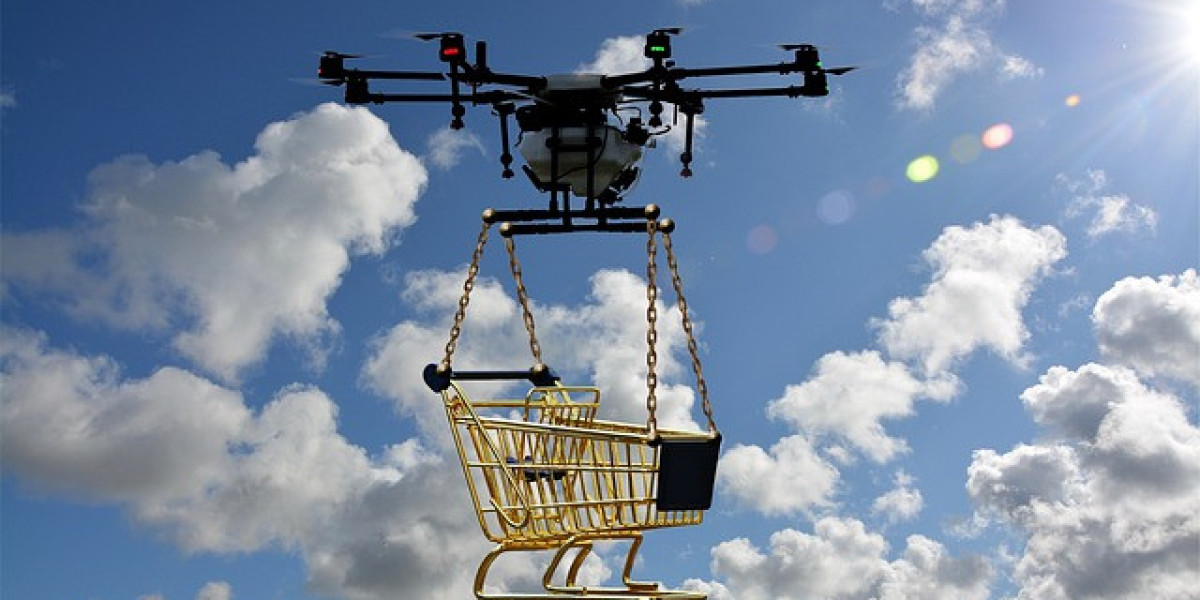The drone package delivery market is set to soar in 2025, reshaping logistics and e-commerce with its rapid growth and innovative solutions. Valued at over $20 billion, this dynamic industry is creating waves as drones evolve from futuristic concepts to practical tools for last-mile delivery. The combination of advanced technology, consumer demand, and environmental considerations is driving this market to unprecedented heights.
Market Drivers Fueling Growth
Several factors are propelling the drone package delivery market forward:
- E-commerce Boom: With online shopping becoming the norm, the demand for fast and efficient delivery solutions has skyrocketed. Drones offer a way to fulfill the growing expectation of same-day or even one-hour deliveries.
- Technological Advancements: Innovations in drone technology, such as extended battery life, enhanced GPS systems, and autonomous navigation, are making drone deliveries more reliable and scalable. These advancements reduce operational costs, making drone delivery more attractive to businesses.
- Sustainability Goals: As companies strive to reduce their carbon footprint, drones present an eco-friendly alternative to traditional delivery vehicles. Their ability to operate on electric power aligns with global efforts to combat climate change.
- Regulatory Support: Governments worldwide are increasingly supportive of drone delivery initiatives, issuing guidelines and certifications that encourage adoption. The Federal Aviation Administration (FAA) in the U.S. and similar regulatory bodies globally are working to streamline drone operations.
Key Players in the Market
Major companies are competing to dominate this space:
- Amazon Prime Air: The e-commerce giant continues to lead with its drone delivery service, promising ultra-fast deliveries for Prime members.
- UPS Flight Forward: UPS is expanding its drone delivery operations, focusing on healthcare and urgent logistics.
- Wing (by Alphabet): Wing has made strides with its FAA-certified drones, offering efficient deliveries in suburban and rural areas.
- Zipline: Originally focused on medical supply deliveries in remote areas, Zipline is expanding into general e-commerce.
These companies are shaping the market while inspiring smaller startups to innovate in niche sectors.
Challenges to Overcome
While the potential is immense, the industry faces challenges that need to be addressed:
- Airspace Management: The growing number of drones raises concerns about airspace congestion and safety.
- Public Acceptance: Privacy and noise concerns remain hurdles for widespread adoption.
- Infrastructure Development: Establishing networks of drone hubs and charging stations requires significant investment.
Opportunities on the Horizon
The future of the drone package delivery market lies in diversification and integration. By 2025, we can expect:
- Broader Applications: Beyond retail, industries like healthcare, agriculture, and disaster relief are adopting drone deliveries.
- Urban Innovations: Drone delivery networks in cities will likely become commonplace, with smart infrastructure enabling seamless operations.
- Collaborations: Partnerships between governments, private companies, and logistics firms will drive innovation and address challenges collaboratively.
For More Info https://www.gmiresearch.com/report/drone-package-delivery-market-analysis-industry-research/
Conclusion
The drone package delivery market in 2025 is more than just a trend; it’s a revolution. With rapid advancements, expanding applications, and increasing acceptance, drones are poised to transform logistics and redefine consumer expectations. Companies that invest early in this technology will not only stay ahead of the competition but also contribute to building a more sustainable, efficient, and connected world.









